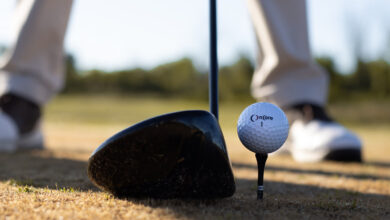Starting your journey into golf can be both exciting and a bit overwhelming, especially when it comes to choosing the right clubs. With so many options available, it’s easy to feel lost. Don’t worry! We’re here to help you understand the basics of selecting the right golf club, making it a more straightforward and enjoyable experience.
Understanding the Basics
Golf clubs come in various types, each designed for specific situations on the course. The main types include drivers, woods, irons, hybrids, wedges, and putters. As a beginner, you don’t need to own every club. Instead, focus on the essentials that will help you get started.
Drivers
The driver is typically the longest club in your bag and is used for tee shots on par-4 and par-5 holes. It’s designed to send the ball flying down the fairway. Look for a driver with a larger head size, as they are more forgiving on those less-than-perfect hits—a great choice for beginners!
Woods
Fairway woods are great for longer shots from the fairway or rough. They’re easier to hit than a driver for many beginners and can help you reach the green when you’re not quite close enough with an iron. Consider getting a 3-wood, as it’s a popular choice.
Irons
Irons are where you’ll do most of your work on the course. They are numbered (like 5-iron, 7-iron, etc.), indicating their loft and distance. As a beginner, it’s wise to start with a set of cavity-back irons. They offer a larger sweet spot, making them easier to hit straight and far.
Hybrids
Hybrids combine the best of both woods and irons and can be a lifesaver on the course. If you find traditional long irons tricky, a hybrid can offer a more forgiving alternative. A 4 or 5 hybrid is an excellent addition to your collection.
Wedges
Wedges are essential for getting up close to the hole. You’ll want a pitching wedge for longer short-game shots and a sand wedge for those tricky bunker shots.
Putters
Finally, don’t overlook the importance of a good putter—this is the club you’ll use the most, as it’s essential for completing each hole. Personal preference plays a big role here, so try out a few different styles until you find one that feels comfortable.
Finding the Right Fit
Once you have a basic understanding of the different types of clubs, the next step is ensuring they fit you properly. Fit is crucial for performance. Here are a few considerations:
-
Height and Arm Length: Taller players may need longer clubs, while shorter players might require shorter ones. Don’t hesitate to ask for advice when buying clubs; many shops offer fitting sessions.
-
Grip Size: The grip of your club should feel comfortable in your hands. If it’s too large or too small, it can affect your swing and accuracy.
-
Flexibility of the Shaft: Beginners usually benefit from more flexible shafts, as they can help generate more distance. Again, staff at your local golf shop can guide you here.
Trying Before You Buy
Before making any purchases, head to a driving range or a golf shop with demo clubs. It’s essential to try out different clubs and see which ones feel right. Don’t hesitate to ask for advice from more experienced golfers or professionals; most people are happy to share tips!
Summary
Selecting the right golf club is key to starting your golfing journey on a positive note. Focus on getting a driver, a couple of woods, a few irons, a hybrid, wedges, and a putter. Ensure they fit you well, and don’t forget to test them out before you commit to a purchase.
Golf is a fantastic game that offers challenges and joys, so take your time and enjoy the process. Remember, everyone was a beginner once, and with the right equipment in hand, you’ll be swinging with confidence in no time! Happy golfing!



